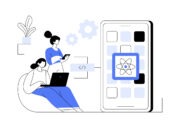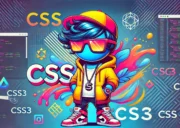
What Are Software Documentation Tools?
Software documentation tools are specialized applications designed to facilitate the creation, organization, maintenance, and sharing of software documentation. Documentation is an essential part of the development process, encompassing a wide range of written materials such as technical guides, API documentation, end-user manuals, system architecture descriptions, test plans, and more.
The core features of documentation tools include:
- Text editing and formatting capabilities to craft the content of the documentation.
- Templates and design elements to standardize and expedite document creation.
- Collaboration features allow multiple contributors to work on the documentation simultaneously and track changes or comments.
- Version control, which keeps a history of document changes, allows for rollbacks, and helps manage multiple versions of documentation.
- Integration with other development tools, such as version control systems, issue trackers, and continuous integration pipelines.
- Search functionality that enables users to quickly find the information they need within large and complex documents.
- Publishing options, whether online access, downloadable formats, or in-product help systems.
Effective software documentation tools streamline the process of creating accurate and useful documentation, which helps to ensure that software products are utilized correctly and to their fullest potential.
How are Documentation Tools Evolving in 2023 and Beyond?
Documentation tools are rapidly evolving, adapting to new technological advancements and the changing needs of software teams and their end-users. One of the most impactful trends is the integration of generative AI. This technology is being harnessed to automate the generation of documentation and provide intelligent recommendations, thereby streamlining the documentation process and making it more efficient.
Collaboration is at the heart of modern software development, and with the rise of remote work, documentation tools are enhancing their collaborative features to support teams scattered across different geographies. The focus is on real-time editing, detailed commenting systems, and streamlined notifications, allowing for seamless asynchronous collaboration. Additionally, a growing demand for interactive and engaging documentation is driving the inclusion of features such as interactive walkthroughs, embedded tutorials, and multimedia support, enriching the user experience and making complex information more digestible.
The emphasis on user experience is evident in the evolution of documentation tools, which now prioritize intuitive navigation and content consumption through modern design principles. This user-centric approach goes hand-in-hand with the trend towards deeper integration with development tools, ensuring synchronization and consistency across different platforms.
Similarly, documentation tools are also adapting to provide personalized content, with options to tailor information based on user roles and expertise levels. Analytics and user feedback features are becoming standard, allowing teams to track engagement and receive input for continuous content refinement.
10 Documentation Tools You Must Try in 2024
Our list of documentation tools includes some old favorites like Document360, developer-oriented tools like GitBook, and the latest tools that can generate documentation using generative AI technology.
Document360
Document360 is a robust knowledge-based platform designed to create, collaborate, and publish documentation. The user-friendly interface, coupled with powerful features like full-text search, versioning, and analytics, makes it a tool worth trying.
Document360 also allows you to customize and brand your knowledge base, making it more appealing to your audience. With its integration capabilities with popular platforms like Slack and Microsoft Teams, it ensures seamless collaboration. Moreover, it provides the option to publish your documentation privately or publicly, giving you control over your documents’ accessibility.
Nuclino
Nuclino is a lightweight and collaborative wiki for all your team’s knowledge, notes, and projects. It’s a unified workspace where you can bring all your team’s work together, making collaboration a breeze.
Nuclino offers real-time editing, allowing multiple team members to work on a document simultaneously. With easy-to-use features like intuitive drag-and-drop, embedding rich content, and easy navigation, Nuclino makes documentation a seamless process.
GitBook
GitBook is a modern documentation platform where teams can document everything from products, to APIs and internal knowledge-bases. It’s a versatile tool that simplifies the process of creating and managing documentation.
With its intuitive interface, GitBook allows you to create robust, interactive, and visually appealing documentation. It also provides tools for collaboration, ensuring your team can collectively contribute to the documentation process. GitBook’s smart search, versioning, and integration with GitHub make it a must-try documentation tool.
Confluence
Confluence by Atlassian is a powerful tool that offers a collaborative workspace to create, share, and discuss your work. From technical documentation to project planning, Confluence has got you covered.
Its rich set of features, including page templates, powerful editor, and in-depth analytics, make it a comprehensive tool for documentation. With seamless integration with other Atlassian products like Jira and Trello, Confluence ensures all your work remains interconnected, promoting productivity and efficiency.
Read the Docs
Read the Docs simplifies software documentation by automating the building, versioning, and hosting of your docs. It’s an open-source tool that supports Sphinx docs written with reStructuredText, and can pull from your Subversion, Bazaar, Git, and Mercurial repositories.
Read the Docs provides simple, beautiful, and interactive documentation that your users will love. With its version control capabilities, you can maintain different versions of your documentation, ensuring your users always have access to up-to-date information.
MarkdownPad
MarkdownPad, as the name suggests, is a full-featured Markdown editor for Windows. It’s a simple and powerful tool for those who want to write in Markdown — a lightweight markup language that you can use to add formatting elements to plaintext text documents.
MarkdownPad offers instant HTML previews, easy formatting with keyboard shortcuts, and the ability to customize your writing interface. If you’re a fan of Markdown and need a dedicated tool to write in it, MarkdownPad is worth trying.
Doxygen
Doxygen is a standard tool for generating documentation from annotated C++ sources, but it also supports other popular programming languages. It’s a perfect tool for developers who need to document their code.
Doxygen can generate an online class browser (in HTML) and/or an offline reference manual (in LaTeX) from a set of documented source files. The fact that it’s free to use and has cross-platform compatibility makes it a must-try tool for developers.
iA Writer
iA Writer is a clean, simple, and distraction-free writing app designed for focused writing. It’s a perfect tool for those who need minimal interfaces with maximum effectiveness.
iA Writer offers features like focus mode, night mode, full-screen mode, and an integrated file library, providing an enhanced writing experience.
DocuWriter.ai
DocuWriter.ai is a cutting-edge software documentation tool that uses artificial intelligence to help you create and maintain your documentation effortlessly. By leveraging generative AI, DocuWriter.ai can automatically generate descriptive content and code explanations by simply analyzing your source code and code comments.
With its intuitive interface, DocuWriter.ai makes it easy to edit and refine the generated content. The ability to integrate with version control systems ensures that your documentation stays in sync with your codebase. Furthermore, DocuWriter.ai’s collaboration features empower teams to work together on documentation in real time from anywhere in the world.
Docify AI
Docify AI is another powerful addition to the landscape of documentation tools that harness the power of artificial intelligence. This platform focuses on creating personalized and dynamic documentation experiences. Docify AI analyzes user behavior and feedback to adapt the content, making it more relevant to individual needs.
With Docify AI, you can create interactive and user-friendly documentation with ease. The tool includes features like machine learning-driven search recommendations, automatic content structuring, and the ability to embed various multimedia elements, creating a rich and engaging user experience. Its analytics dashboard provides insights into how your documentation is being used, enabling continuous improvement based on user interaction trends.
Conclusion
In conclusion, the future of documentation lies in leveraging the power of innovative and evolving tools that cater to the needs of diverse development environments and collaborative teams. The 10 documentation tools we highlighted offer something for every use case. These tools stand out for their user-friendly interfaces, real-time collaboration features, integration capacities, and intelligent automation, reflecting a growing trend toward more efficient, interactive, and intelligent documentation processes.
As we look to the future, the continuous evolution of documentation tools is expected to focus on enhancing user experience, providing personalized content, embracing advanced AI functionalities, and integrating more deeply with other development tools, all while ensuring accessibility and ease of use.
With the increasing complexity of software projects and the globalization of teams, the right documentation tools are more crucial than ever. By trying the recommended tools of 2024, organizations and developers can stay ahead of the curve, embracing the latest advancements in documentation technology to foster better understanding, collaboration, and efficiency in their software development efforts.




